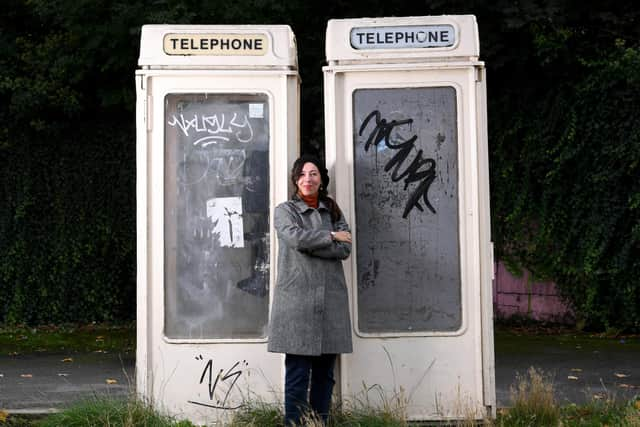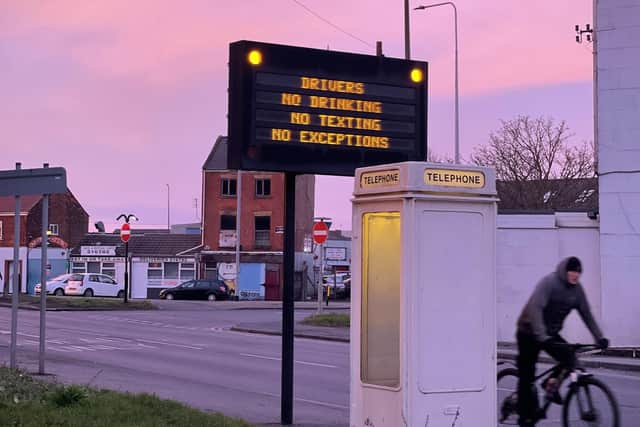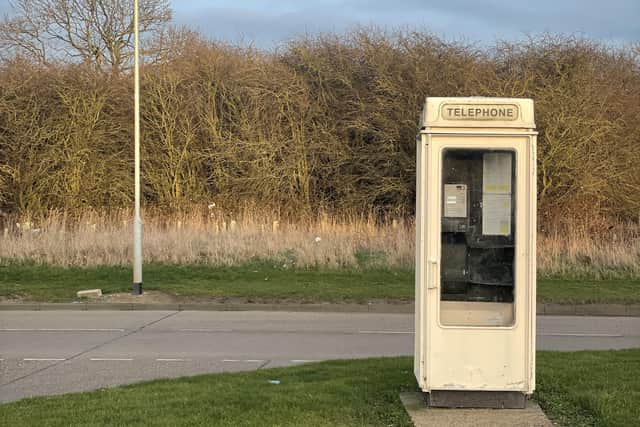K8 telephone boxes in Hull: The Yorkshire photographer taking pictures of the last remaining K8 telephone boxes in Hull
With the fast pace of technological development over the past couple of decades, it now seems a very long time ago that in order to make a phone call while you were out and about, you needed to find a public telephone box. Those of a certain age will remember queuing up outside one, with a handful of loose change.
That was in the pre-mobile phone era, of course, before everyone had their means of communication with them at all times.
Advertisement
Hide AdAdvertisement
Hide AdThere used to be a telephone box on almost every street corner – a necessary part of community cohesion and wellbeing, they were literally a lifeline in the event of an accident or emergency.


These days they are few and far between, with many falling into disrepair and being removed from our built environment. This gradual disappearance of a piece of our collective past is partly what prompted Hull-born photographer and filmmaker Esther Johnson’s latest project The Beacons of Hull, a photography book celebrating the K8 telephone box.
Designed for the General Post Office (GPO) by industrial designer Bruce Martin, the first K8 was installed in July 1968 at Old Palace Yard in Westminster, London. Between 1968 and 1983 around 11,000 K8s were rolled out across Britain. They were the last of the classic kiosk-style telephone boxes, with the more open ‘Oakham’ booth being introduced in 1981 when British Telecom was established as a separate public corporation.
“I have always loved the design of the K8 telephone box,” says Johnson who is Professor of Film and Media Arts at Sheffield Hallam University. “When I was growing up in Hull there were quite a few of them around where I used to knock about as a kid. I always thought of them then as looking very modern and sleek and they also looked very friendly to me. They almost seemed as though they had stepped out of the pages of a Ladybird book.”
Advertisement
Hide AdAdvertisement
Hide AdMuch of Johnson’s work focusses on social history, exploring alternative or marginal perspectives and telling stories that might otherwise remain hidden or ignored.


Her previous projects include short film A Role to Play about contemporary working life made in collaboration with adult reading group members, food bank users and volunteers, A Share of a Pensioner’s Christmas Bonus, an exhibition and body of work inspired by acts of kindness during the 1984 miners’ strike, and Ships in the Sky which focussed on Hull’s former Co-op and BHS building with its iconic 1963 Three Ships mosaic facade by acclaimed artist Alan Boyson.
“I am very interested in the built environment and architecture, how places make us feel and also things that might go unnoticed by us in our surroundings,” she says. “A lot of those K8 phone boxes are endangered and I am very firmly in favour of trying to preserve them. The book is a love letter to them but it’s also trying to raise awareness of them and to protect them.”
The good news is that several of the K8s have this year been Grade II listed by the Department for Culture, Media and Sport (DCMS) on the advice of Historic England, including nine in Hull, all of which are in working order. What makes Hull’s K8s so special, unique in fact, is their colour – in most parts of the country the kiosks were red but in Hull they are cream. That decision was made by the Hull Corporation Phone Department, founded in 1904.
Advertisement
Hide AdAdvertisement
Hide Ad“They decided the boxes would be painted cream and they have remained that colour ever since,” says Johnson. “And as the corporation was not national or Crown property, none of the boxes had a crown on the top. There are a few other places where the boxes were different colours – some places had yellow or green ones but they were generally red and Hull is the only place where they are cream. From records you can access, there are around 80 K8s left in the whole country and 45 of them are in Hull, so we have the most of them.”


Johnson has her own personal connections with K8s from her childhood and one in particular has a poignant resonance. “There was one not far from where I grew up which was taken away last year,” she says. “I have lots of memories linked to that. I remember using it after being at the launderette and calling friends. It made me quite sad when I noticed it had gone. Luckily, I had managed to photograph it before it was removed.”
The idea of making a photographic collection of the K8s had been in Johnson’s mind for a while and she eventually began working on it around two years ago. “I started with some research with KCOM, the company that used to be Hull Corporation Telephone Department – they gave me access to their records, archives and photographs,” says Johnson. “And I visited the BT group archives which holds all of the GPO archive. I also went to Avoncroft Museum of Historic Buildings in Worcestershire where there are lots of telephone boxes from all different eras – it was useful for me to understand the history of how they developed.”
Then it was a case of travelling around Hull with her camera capturing the K8s on film. “My mum and dad came with me when I was photographing them in the summer of 2022 and early this year and they are now obsessed with them too,” she says, laughing. “I would like to see more of the boxes being listed and hopefully that is on the cards – the heritage campaign group the 20th Century Society and Historic England have been doing a lot of work on it.”
Advertisement
Hide AdAdvertisement
Hide AdThe response to the book so far has been very positive. “There’s been some lovely feedback,” says Johnson. “A lot of people have said ‘I have walked past those telephone boxes and never really thought about them; it’s made me look at them differently.’ I’m really pleased about that because all my work in a way is about highlighting some of the things we maybe don’t notice and encouraging people to take a second look.”
The Beacons of Hull by Esther Johnson, £8, is published by The Modernist and is available through the-modernist.org